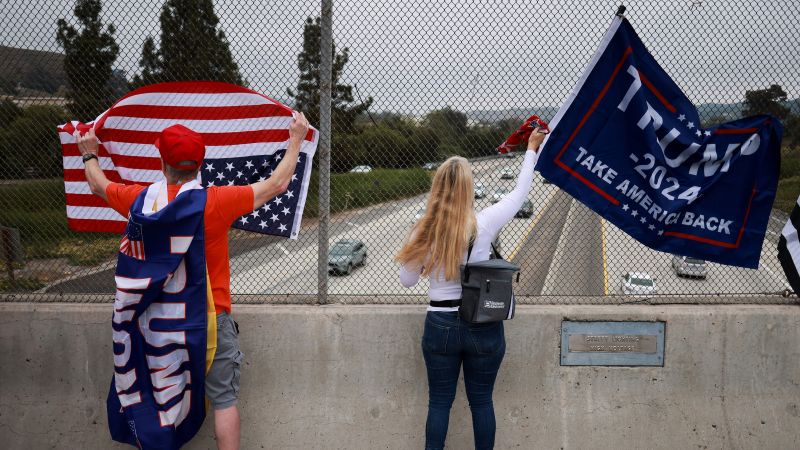The practice of hanging the United States flag upside down as a signal of distress has recently been adopted by supporters of former President Donald Trump in response to his conviction in his hush money trial. Prominent figures such as Rep. Marjorie Taylor Greene and former national security adviser Michael Flynn have posted images of upside-down flags on social media, sparking a trend among pro-Trump supporters across the country. Even organizations like the Heritage Foundation have joined in, with an image appearing to show an inverted flag above their Washington, DC headquarters.
Reports have emerged of American flags being turned upside down in various locations, including outside a library in Monrovia, California, where flags were placed to honor veterans on Memorial Day. The city was shocked to discover the flags inverted and took steps to correct them with the help of staff and community members. The act of displaying the flag upside down has come under renewed scrutiny following revelations that a similar display was seen outside the home of Supreme Court Justice Samuel Alito in January 2021, at a time when it was a symbol used by Trump supporters alleging election fraud.
According to US code, the flag should never be displayed with the union down except as a signal of dire distress in instances of extreme danger to life or property. Despite this guideline, the practice has gained momentum over the weekend, with country music star Jason Aldean posting a picture of an inverted flag on Instagram following the verdict in Trump’s trial. Aldean expressed concern about the current state of the country and raised questions about the treatment of a former president by the justice system, prompting a strong response from his followers on social media.
The trend of hanging upside-down flags has stirred controversy and divided opinions on the meaning behind such displays. While some view it as a legitimate form of protest against perceived injustices, others argue that it disrespects the flag and undermines its symbolic significance. The widespread adoption of this practice by Trump supporters reflects a growing sense of discontent and frustration among a segment of the population who feel marginalized or persecuted by the legal system.
As the debate over the use of inverted flags continues, it serves as a reminder of the deep political divisions and societal tensions present in the United States. The symbolism of the flag, a potent emblem of national identity and unity, is being appropriated for political expression and protest, further polarizing an already fractured political landscape. The display of upside-down flags is a stark representation of the turmoil and uncertainty gripping the nation, highlighting the challenges in finding common ground and resolving conflicts in an increasingly polarized and contentious environment.


